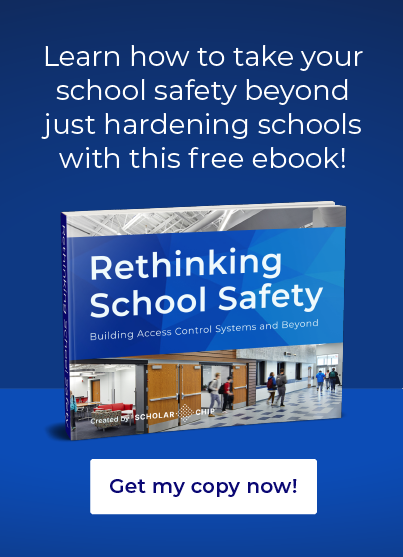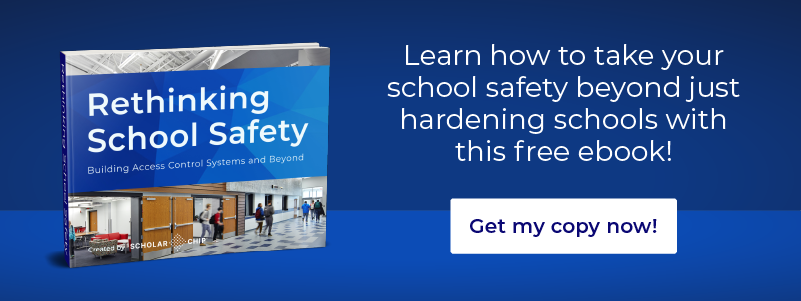You may have experienced a large public outcry in your school district for better security for your schools and children, especially due to the numerous recent shootings.
You might think your current safety and security solutions are in order, as you don’t want to harden your schools to the point of disrupting the school setting. But you still need to think beyond armed guards and spend time having tough conversations about student wellbeing, as well as the importance of mental health.
The Safety Protocols in Today’s Schools
Prevention is often linked with security and infrastructure, so states have taken steps to prevent school violence using hardening programs. Under this strategy, police officers are deployed at schools, entry points are limited, metal detectors are used on these entry points, and school teachers are armed.
According to Muhammad Shahzad Asif Khan, MD, who works in a technological policing project at the National Academy of Public Administration, Washington DC, schools are arranging mock exercises to prepare kids as young as five and six years old for any eventuality. But such measures will have a psychological impact on kids, which may be hard to measure but easy to feel. Also, one problem with school safety and security hardening strategies is that a potential assailant will already know the procedures in place.
Some government officials have also advocated arming teachers, as well as recruiting former police and military personnel for school duty. In the same vein, the National Rifle Association recently promoted its plan to view schools as windowless bunkers surrounded by impenetrable fencing.
Is that a way forward for your students? How does this work to not only protect your students and school surroundings but also take into account how students actually feel?
School Hardening Isn’t the Answer
Policed schools, entry point metal detectors, and armed school teachers aren’t the answer. These methods disrupt your school’s setting and don’t necessarily make students feel safe. There is still a need to reduce the number of violent or harassment-related incidents, but you can do so without formal school hardening.
Schools worry that hardening will take away focus and money from programs that prevent bullying and counsel at-risk kids. Visible security measures like metal detectors and armed officers actually make students feel less safe, according to government surveys.
A good school climate is one free of violence and disruption. Your students’ learning occurs best in a warm, inviting setting, where they feel safe and free from threats, bullying, weapons, drugs, or violence in any form.
There have been discussions over how to create safer schools. These have included a number of issues, such as the scarcity of mental health services.
In a recent meeting in the Adams Friendship School District, a panel that included Secretary of Education Betsy DeVos discussed the topic of mental services in their schools. Through a survey reviewed there, it was discovered that 24% of students were involved in school-based treatment. Twenty-three percent were treated through specialty mental health services, while another 10% were treated in primary care. The belief is that it’s more effective and easier to treat behavior early on rather than in adulthood.
Threat assessment procedures
The US Department of Homeland Security’s Cybersecurity and Infrastructure Security (CISA) have established several school threat assessment procedures that should trigger intervention:
- Behaviors. These include those regarding immediate intervention, such as threats, violent actions, weapons on campus, and other concerning behaviors.
- Student communications. Learn if there have been unusual, threatening, or concerning communications from a student. Things to look at include depression, despair, desperation, or thoughts of suicide. Are there any specific stressors for that student? Do they feel that violence is a way to solve their past or present problem(s)?
- Emotional and developmental issues. Are there mental health issues or developmental disabilities? Does the behavior indicate a problem resulting from those issues? What resources does the student need?
- Concerned others. Has the student’s behavior concerned others? Was this related to safety?
- Capacity. Is the student organized enough to plan and execute an attack? Do they have the resources?
With school safety and security at the forefront without disrupting your school setting, there are technology solutions that can help manage student behaviors and protect schools and don’t resort to hardened methods.
Non-invasive Technologies to Protect Your Schools
There are ways to create safe, nurturing schools where kids can learn. These include the use of behavioral intervention, smart ID cards, and visitor management.
Alternative Behavior Educator from ScholarChip
ScholarChip provides an Alternative Behavior Educator (ABE), web-based behavior management, and intervention technology that enables educators to work with student behaviors before they have a chance to escalate into violent ones.
ABE uses referrals, interventions, notes, and other information that are connected to a student that chronicles the student’s behavior and progress throughout their school career. They can learn appropriate behavior through evidence-based, age-appropriate videos that are designed to help them learn and succeed academically and beyond the classroom, resulting in a better outcome.
Smart ID cards
Smart ID cards are a starting point in securing and streamlining a school day. Identification is the beginning; they’re contactless collect attendance data. Students and tap their cards onto portable kiosks, providing real-time, automatic data of absences to school staff and parents. By adding Smart ID cards, students can take ownership of their attendance.
Attendance is also taken on a bus, in a building, a cafeteria, and classrooms for streamlined reporting and better safety.
Attendance levels increase, while truancy levels decrease, tracking those students early on so they can be set on the road to a productive education.
Visitor management
Visitor management technology software allows the front-office staff to track who is coming into buildings, whether they are authorized parents or other individuals picking up students, volunteers, vendors, or delivery personnel. Late arrivals and early dismissals are tracked for additional school safety and security. Visitor management also checks visitors against a national sex offender database by scanning government-issued or school district-issued identification.
ScholarChip Provides Your School with Safety and Security without Compromising Your School Setting
The last thing you want to do is harden your schools with methods that result in disruption. ScholarChip enables you to address your school safety issues in a positive way with its ABE, Smart ID card, and Visitor Management technologies, allowing you to address your school safety and security concerns without disrupting the school setting.
To learn more about how ScholarChip can help you improve your school safety and security without disrupting the school settings, contact us for a free 1-to-1 walkthrough with one of our specialists today!


